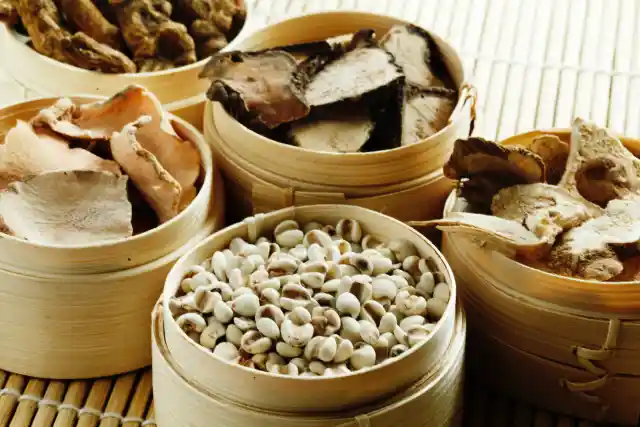2024 can officially be declared as the year of Umami. We anticipate seeing a lot of recipes using umami-rich ingredients. Chefs are using umami-rich ingredients like fermented soy products, miso, and seaweed to create exceptionally delicious meals that are hard to resist.


Following the taste senses of salty, sweet, sour, and bitter, umami is essentially the fifth. It means "pleasant savory taste" and has been characterized as having a meaty or brothy flavor.
Umami can be tasted in meals with a high glutamate content. It stimulates the back of the mouth, the roof of the throat, and the throat itself. It leaves a slight but lingering aftertaste that corresponds to salivation. This aids in digestion and offers several possible health advantages.
On the same note, here's a list of umami-rich ingredients you can add to your pantry:
Mushroom
Because of their inherent high umami content, mushrooms—especially dried ones like porcini or Japanese shiitake—are a common and flavorful addition to sauces and broths, occasionally serving as a meat substitute.


They give burgers and sandwiches an instant upgrade, go well with salads, and give soups and stews a wonderful taste depth.
Tomato paste
Tomatoes have high levels of glutamic acid. And they have a potent flavor-boosting punch when reduced to a paste. A little tomato paste goes a long way, so after adding a dollop from a can—or occasionally a tube—to your Italian American red sauce, you'll need to figure out what to do with the rest.


In order to replace any tinny, canned flavor with the cleanest, tastiest tomato flavor possible, cook the paste gently at the start of your process.
Soy sauce
Soy sauce adds needed saltiness to every dish it's in, but it's that other flavor that sets soy sauce apart from other salty ingredients: lots and lots of umami. Soy sauce is made through a lengthy curing and fermenting process.


Of course, there's not just one kind of soy sauce—there are countless soy sauce varieties spanning regions and applications.
Miso
This fermented soybean paste is ideal for boosting the body and umami taste of a saucy meal without adding meat. Miso paste comes in a variety of forms, and each gives your food a distinct flavor.


It's a great addition to soups as a finishing touch or as a butter replacement for veggies. Keep in mind that it is slightly salty.
MSG
MSG is considered a rather controversial substance. Most people have been afraid for years that MSG sensitivity might result in symptoms such as headaches and itching. But not anymore. Now, all the rumors have been refuted.


Monosodium glutamate, or MSG for short, is a food additive that has been accepted by the FDA. It is generated from glutamic acid, one of the necessary amino acids in complete proteins. It accentuates the savory qualities of meat, giving plant-based foods like soy, tomatoes, and mushrooms a more satisfying taste.
Doenjang
Compared to many other miso varieties, this Korean fermented soybean paste is richer and darker. It is used in many different cuisines and is typically aged for two years.


Doenjang is known for its complex and deep flavor profile, which adds depth to soups, stews, and marinades. Its fermentation process not only enhances its taste but also increases its nutritional value by breaking down proteins and carbohydrates into more easily digestible forms.
Aged Cheese
For cheeses to acquire distinctive tastes and improve their umami qualities, aging is an essential process. Several chemical and physiological changes occur throughout the aging process, causing umami amino acids to accumulate.


Ageing gives cheeses like Parmigiano-Reggiano a profoundly nutty flavor and increased umami content. Parmesan enhances the savory-sweet flavor of risotto. The strips of ricotta salata, a softer but still wonderfully aged cheese, lend a tangy saltiness to salads.
Kimchi
This spicy pickled dish from traditional Korea is incredibly rich in umami compounds. Fermentation is the cause of it. Cooking with kimchi adds flavor, crunch, and color to your food. Fermentation occurs in many Umami foods.


Our taste receptors identify the delightful umami taste in these goods as a result of the high glutamate content.
Kombu/Seaweed
The ingredient is produced by drying several varieties of kelp that are collected from the ocean. The discovery of umami was really made by Kombu. Dr. Kikunae Ikeda set out to discover the secret of the flavorful and savory kombu broth in the beginning of the 1900s.


It was then that he discovered the delectable flavor that kombu's glutamic acid contributed—a flavor that was still unidentified. He called this recently identified flavor "umami."
Smoked Meat
Naturally, smoked meats such as bacon, sausage, and ham are full of umami taste. Processed, cured, and dried meats are usually excellent sources of taste.


Consider how much more wonderful almost everything can be when bacon is added. Bacon is the most umami-rich of all the cured meats.